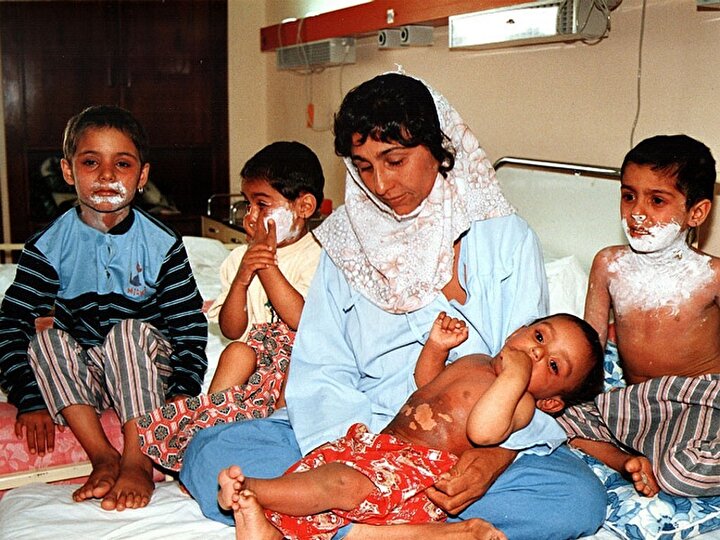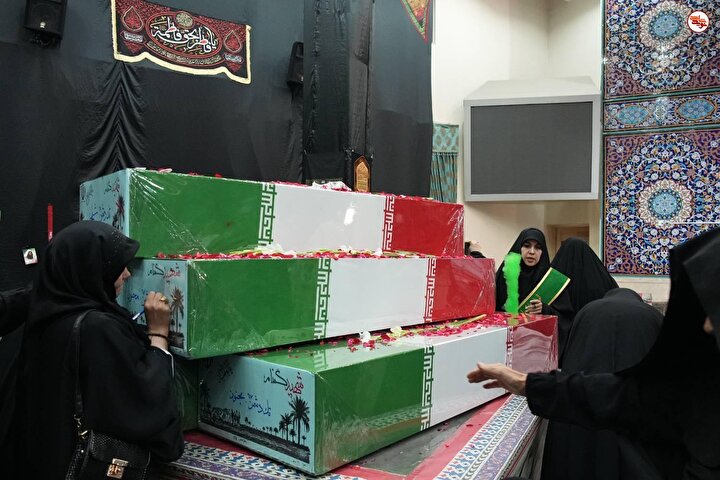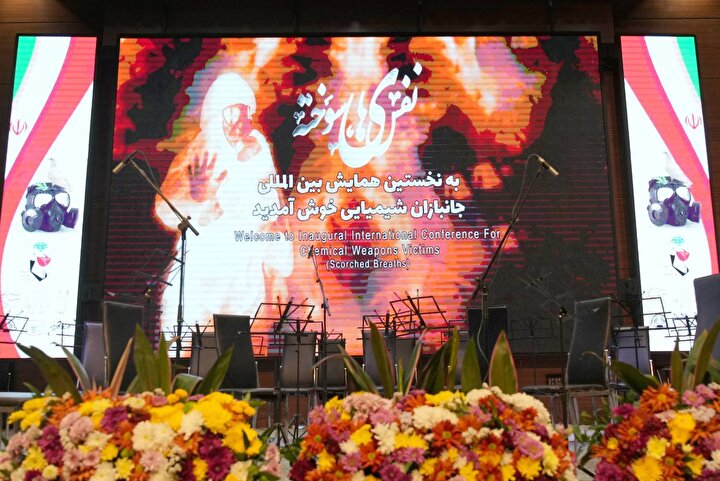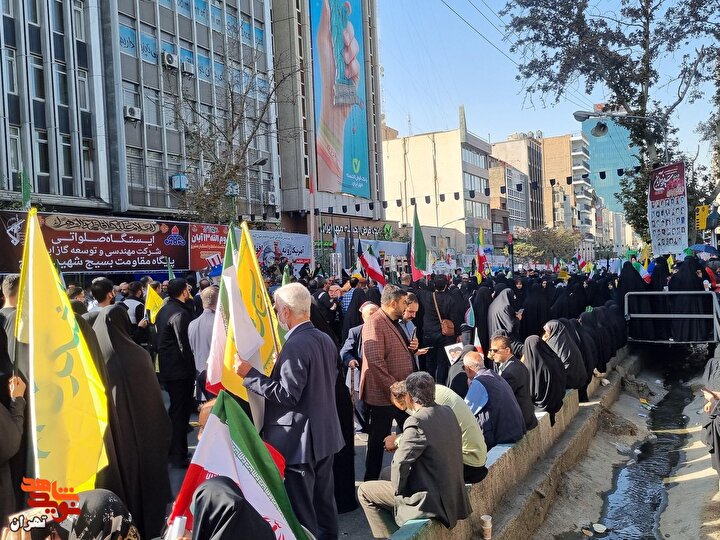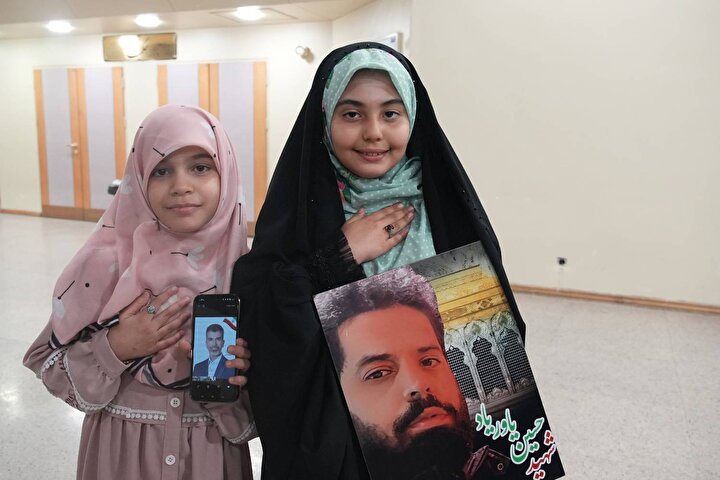
Memory, Documentary or Non- Documentary
Mixing Two Types:
Passing more than two decades since beginning of serious activities of publishers and writers in the field of sacred defense has caused motion and change in the silent filed of literature in the country.
Publishing more than six thousand titles of books in this field and appearance of tens of amateur writers and creation of different literary types is not an event that we can pass over it indifferently.
Among the mentioned works, if we exclude known literary types such as sentences, memories, biographies, stories, film scripts, plays, novels, poetry and literary pieces we face with the works that are not included in any of mentioned literary types; but they exist. And they have sometimes attracted the audiences as much as the well known literary types. These works are mainly created by mixing two literary types. And the most important characteristic of these works is the fact that the literary type of “Memory” is fixed in all them. As some examples, we can refer to the followings: Memory- Story, Memory0 Novel, Memory- Film Script, Memory- Play, Memory- Literary Pieces and…
Personal Taste in Mixing and Putting Names
Considering the fact that there is no particular criterion in access for such compound works, some compilers have grasped this opportunity and act based on their own tastes. They used their taste both in the amount of combining and in putting name on the type of the work. Hence, there are two important and basic questions for studying such works.
1: What is the amount of mixing?
2: How does the name is selected for this type of work?
There is no sign that shows the amount of mixing in these works. It is not clear how much the writer has benefited from the memory and how much he/she has benefited from other types. It is not clear how much he/she has changed the original document and how much he/she has been faithful to the original document. In the same way, the reason and method of choosing a name for the selected type are questioned. On what base, some books are included in the type of “Rewriting”? And why some others are called “Recreation”, “Like Story”, “Derived from Memory”, “Based on Memory”, “Narrative Biography” and …
Can we look at such works as trustable documents and sources for conducting researches relying on them?
Based on what criterion are these works evaluated? Is it the criterion of the first type (Memory)? Or is it the criterion of the second type? Or these works should be evaluated based on criteria of both types?
What is the objective of the compiler by combining these two types? Or is it basically an appropriate act to mix these types or not?
The mentioned questions are the most important questions that have made the minds of experts busy.
Compound Types in Memory:
This article is written aiming at presenting a specific definition about the compound (Mixed) types.
To this end, we have classified the compound types in three general groups:
1: The type that has preserved the aspect of being a document and we can rely on it as a document
2: The type which its documentary aspect is weak
3: The type that its documentary aspect is not reliable and trustable. And it has merely the literary aspect.
The first group includes “Memory” and “Rewritten Memory”. The second group includes “Recreated Memory” and the third group includes “Memory- Story”.
A) Documentary
1: Memory
“Memory” is called to the events which have been recorded on mind. And writing these events by details and without changing the time and location of the event and the original event is called “Memory Writing”.
The aspect of being “Documentary” of the “Memory” is creditable; because its main bases which are time, location and event have not been changed. Please pay attention to an example of a “Memory” regarding sacred defense which is narrated by Martyr Pilot Hossein Khal’atbari and is as follows:
“My first foreign mission was carried out on September 22nd, 1980. Following bombardment of “Mehr Abad” Airport by Iraq, we were commanded to immediately attack Baghdad with eight aircrafts. In our way to Baghdad, we were targeted every five miles by the missiles of the enemy. We finally reached to the target and attacked “Al- Rashid” and “Al- Mosanna” Bases in the heart of Baghdad. My interesting memory about this mission is regarding seeing a golden dome in southern part of Baghdad. Through the radio, I told the other pilots in the aircrafts next to me that I see a golden dome. Colonel Mohagheghi replied me: May your pilgrimage is accepted! That is the holy shrine of Imam Mousa Kazem (The 7th imam of Shiite).” 1
As you see, this memory ahs the elements of “Event, Time and Location”.
Event: Bombardment of “Al- Rashid” and “Al- Mosanna” Bases and seeing an unfamiliar dome.
Time: September 22nd, 1980
Location: Baghdad
2: Rewritten Memory
“Memory” is an independent literary type and has the capability to be individually considered as a member of literature family. It may be however written with its virgin form or it may be rewritten and the style of writing changes. Hence, “Rewritten Memory” is the same as “Memory” with a different way of narrating and different prose such that the rewritten version is faithful to the original time, location and event.
“Rewritten Memories” can be also referred as documents; because the compiler has not adopted changes in basic framework of them. Changing the way of narrating, language or prose of the memory does not damage to being “Documentary”. And it is a very natural process; because firstly, the way of narrating and the type of prose are not the basic elements of the memory. Secondly, the way of narrating and the type of prose are not fixed variables.
If you ask a person to narrate a memory once when he is alone and another time in front of TV cameras and the other time in presence of a large number of people, the way of narrating and language of narrating will certainly be different by the same person in three different situations; because interior and exterior situations will affect on these variables. And that is while basic elements of that memory (Time of occurrence, location of occurrence and the event itself) stay unchanged.
Let’s analyze the same memory about bombardment of Baghdad bases after it has been rewritten:
“It was my first mission. It was September 22nd, 1980. Iraqis had bombarded “Mehr Abad” Airport yesterday. Now we had been commanded to attack Baghdad. We flew with eight fighter planes. The Iraqis make the sky as a hell. Missiles came towards us on and on; but we moved ahead without paying attention to them till we reached to the target; I mean the heart of Baghdad. We should bombard “Al- Rashid” and “Al- Mosanna” bases. We attacked and hit both of them. When we were returning, I suddenly saw a golden dome in south of Baghdad. I did not know whom it belongs to. Immediately I sent a message through radio to other fighter planes that were with me. Colonel Mohaghaghi answered: “May your pilgrimage is accepted! It is the holy tomb of Imam Mousa Kazem.”
If you compare this rewritten memory with the previous virgin memory you find out that there has been no change in time, location and the event originally; but the way of narrating the memory and the prose type have changed a little.
Event: Bombardment of “Al- Rashid and “Al- Mosanna” Bases and facing with an unfamiliar dome
Time: September 22nd, 1980
Location: Baghdad
With weak Documentation:
Sometimes compilers of memories change the concept of the memory due to some reasons. And this way, they create a new work. Hence, this new work is created based on a memory. We would better to call it “Memory” too; but a “Recreated Memory”.
Therefore, “Recreated Memory” is a work that is developed from a memory; but it is different with the original memory as far as the direction, type of look, message and finally the concept are concerned. It means that in addition to the way of narrating, language and prose of narrating, the concept also changes in “Recreated Memory”. This change does not mean changing the whole original event; but it means that some parts of the event have been emphasized and some other parts have been attached less importance or even ignored. Therefore, if a particular memory is recreated by several compilers, the result of the same memory will be a “Recreated Memory” with several concepts; because each of these writers are allowed to emphasize on some parts of the memory based on their own idea, taste and the way they look at the event. And in order that they are able to show this emphasis to the audience, they have to balance and cause changes. As an example, the memory of the epic of Martyr Hossein Fahmideh can be seen from two views; one is the concept of being brave and the other is the concept of being oppressed. [Martyr Hossein Fahmideh was a 13 year old teenager who threw himself under a tank and exploded it and he was martyred]. From one side, we can pay attention to the violence of the enemy and from the other side, we can notice to intelligence and innovation of a 13 year old teenager. To this end, the writer or compiler has to change some parts, not the original event of the memory. The writer may omit some dialogues or adds some other dialogues. He/she may ignore some parts of the original event and he/she may add some parts to the original event.
But time, location and the original event can not be changed.
Here, we want to recreate the memory about bombarding Baghdad bases. In this recreation, we want to show the golden dome outstanding. This recreation is as follows:
“It was September 22nd, 1980. Students were busy and excited with reopening of schools; but Hossein was departing for an examination scene, a great examination. He should show all he had learned by that time there. Could he be successful in that great examination?
Baghdad sky was the kiln of fire. The aircraft of Hossein and seven other aircrafts should enter the kiln and bombard the important bases of Baghdad. The great examination of Hossein was about “Al- Rashid” and “al- Mosanna” bases. The missiles were shot from left and right and all sides in order to melt him in their kiln or at least create an obstacle for him to continue his way; but the irresistible determination of Hossein was too strong to be melt in that kiln.
He reached to the heart of fire. The white examination paper was under his feet. The white paper was the same two important military bases. He did not have much time. He should fill the paper very soon and get the mark of being accepted. He opened the tongue of his pen and poured the bombs on the body of two bases one after the first one. Explosion followed by another explosion. Smog, darkness and fire were all around him. In one moment every thing finished. Now it was the time to leave the examination room; but what about the mark of Hossein?
Any test had a mark and such a beautiful test required a beautiful mark. He suddenly saw the beauty. A golden dome appeared in tearful eyes of Hossein through layers of smog and fire. He knew that it was a familiar stranger. He made a connection with one of his companions with the radio of the aircraft. Hossein said: Mr Colonel Mohagheghi! Whose dome is this dome that shies like the sun?
Colonel answered: “Mr Colonel Khal’atbari! May your pilgrimage be accepted! It is the holy shrine of Imam Mousa Kazem.”
Although the original event has not been changed in this writing and location and time have remained untouched but almost all the sentences have been changed. And the way and language of narrating have been totally changed.
In the original memory, there are no sentences about students and examination. And Khal’atbari does not consider the pilgrimage to the dome as the award of his examination; but the writer has lead the memory towards his/her considered direction by using literary figures, changing the atmosphere of the memory and also completely changing of the prose.
Event: Bombardment of “Al- Rashid” and “Al- Mosanna” bases of Baghdad by Hossein Khal’atbari and his view about this event as a great examination and the pilgrimage of Holy Dome of Imam Mousa Kazem as the award of the examination
Time: September 22nd, 1980
Location: Baghdad
This recreated memory has the value of being referred as a document for common audience; but researchers can not refer to it as a document; because its concept has been changed.
C) Non- Documentary
When it is possible to change documents called as “Memory”, more changes are possible too. The writer whose aim is creating a literary work can derive the subject of his/her work from a memory. In this case, the writer does not have to necessarily remain faithful to the original event, time and location. Therefore, “Memory- Story” is a type of work which its main idea is a memory; but its prose and concept have changed. The following work is an example of “Memory- Story”:
“The pilot asked for permission. A moment later the base was under the feet of the fighter plane. The missiles had locked on him. The darkness became full of holes with the explosion of bullets and missiles.
The darkness of watchtowers of the base had fluttered in the pitch-black chest of the sky like flags of Yazid Army. The pilot looked for sign of holy shrines. Darkness had stuck to the glasses of the fighter plane. He did not have much time. He put his finger on the button of shooting. And a moment later, a mountain of fire raised to the sky. Now there were no effects from the darkness of watchtowers. A light had lit the whole city. In the heart of the city, two domes reflected the fire of the explosion to the fighter plane.
The pilot put his hand on his chest [As the sign of greeting and showing respect].
- Respects and greeting to Imam Hossein
- Respect and greetings to Hazrat Abolfazl”
As you see, this story is derived from the same memory about shooting Baghdad bases. There are no effects from time, location and the original event that were mentioned in the original memory. Meanwhile, it is not completely unrelated to that memory; because this story has referred to the subject of “Shooting Iraqis’ bases in Iraq and pilgrimage to the dome of one of our innocent imams at the same city where the operation was carried out”. And it is the event that has occurred for Martyr Pilot Hossein Khal’atbari. The writer could however choose the city of Baghdad in order to make his/her story closer to the original event and refer to the dome of Holy Shrine of Imam Mousa Kazem. The current story is however a kind of adaptation of the mentioned memory. Hence, we can study time, location and the original event of the memory in this story as follows:
Event: Bombardment of an unfamiliar base
Time: The date is not defined; but we understand from description that the time is some time in the 8 years of sacred defense. And the operation has occurred at night.
Location: Karbala
This story is a non- documentary story. Researches can not refer and rely on this work as a document. Meanwhile, we should not ignore the main idea of the story which has been inspired by a memory. Hence, the writer should identify in some way that the work is an adaptation. To this end, writers mostly use the expressions such as “Developed from”, “Based on”, “Being Inspired from”, “With w Free Look at”, “Memory- Story” and….
Conclusion:
What we mentioned in this article was a general look at memory and the literary types that are developed from memory. The objective of such developments is making the memory attractive, readable and more influential on the audience. The memories that have attractive subjects do not need artificial attractions; but memories in an average level and sometimes weak compensate their shortages and weaknesses by interference of new elements. In this way, the more outside elements move ahead, the more documents sit back. The aspect of being documentary is more in “Recreated Memory” rather than “Rewritten Memory”. And stories are mostly recreations.
In conclusion of this article, the abstract of the article is presented in the following table:
|
Type |
Definition |
Authorized Omitting and Changes |
Prohibited omitting and changes |
Status of relying on documents |
Objective |
|
Memory |
the event recorded in memory |
Secondary Events and Elements Ineffective on Main Events |
Main Time, Location and Event, Secondary Elements and Events Effective on the Main Event |
In all dimensions |
Preserving document and message |
|
Rewriting the memory ه |
The Event Recorded in the Memory with Changes in the Prose |
Secondary Events and Elements Ineffective on the Main Event, Way of Narrating and Prose of the Narration |
Main Time, Location and Event, Secondary Elements and Events Effective on the Main Event |
In all Dimensions except Way of Narrating and Prose of the Narration |
Preserving document while attaching priority to message |
|
Recreating the memory |
The Event Recorded in the Memory with Changes in Prose and Content |
Events and Elements Ineffective on the Considered Content |
Time, Location and the Main Event |
Relying on Document in Main Time, Location and Event and Lack of Relying on Documents in Way of Narrating, Prose and Content |
Priority of Message While Paying Relative Attention to the Document |
|
Memory-Story |
Creating New Works Based on the Recorded Event in the Memory |
Events and Elements Ineffective on Main Idea |
Main Subject of the Memory (Subject of the memory) |
Lack of Relying on Documents in All Dimensions except the Subject |
Priority of the Message While Creating a New Work without Paying Serious Attention to the Document |
Writer: Rahim Makhdoumi
